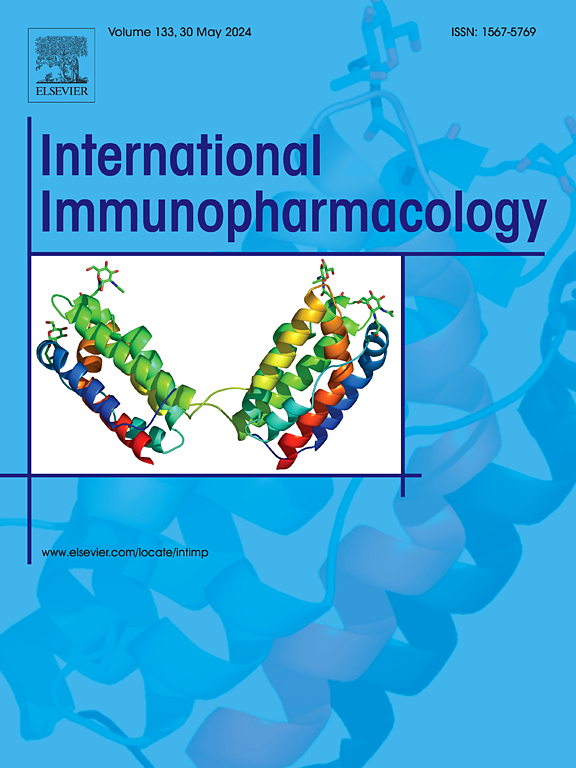ZEB2:神经损伤修复的多功能调节剂
IF 4.7
2区 医学
Q2 IMMUNOLOGY
引用次数: 0
摘要
神经损伤是由于外伤、感染、缺血、遗传因素或其他因素导致损伤部位神经细胞损伤或坏死的病理状态。神经损伤的修复是由机体复杂的调节网络精确调控的。锌指E-box-binding protein 2 (ZEB2)是一种重要的转录因子,不仅在胚胎神经发育过程中起关键作用,而且在神经损伤修复过程中发挥重要的调节作用。本文综述了ZEB2的结构、功能和调控网络,阐述了ZEB2在神经损伤修复中的神经瘢痕形成、再髓鞘形成和上皮-间质转化(EMT)中的关键作用。综述了ZEB2在周围神经损伤、脊髓损伤、出血性脑损伤和mowalt - wilson综合征中的调控作用。本文深化了ZEB2在调节神经损伤修复中的理论意义,旨在为神经损伤修复的治疗策略提供新的视角。本文章由计算机程序翻译,如有差异,请以英文原文为准。

ZEB2: a multifunctional regulator of neural injury repair
Nerve injury is a pathological condition characterized by damage or necrosis of nerve cells in injured areas due to trauma, infection, ischemia, genetic factor or other factors. Neural injury repair is precisely regulated by the complex regulatory network of body. Zinc finger E-box-binding protein 2 (ZEB2), known as a critical transcription factor, not only serves as a key participant in embryonic neural development, but also exerts a vital regulatory role in neural injury repair. This paper summarizes the structure, function, and regulatory network of ZEB2 and then elucidates its pivotal roles in glial scar formation, remyelination, and epithelial-to-mesenchymal transition (EMT) for neural injury repair. Furthermore, it provides a comprehensive summary of advances about ZEB2's regulatory role in peripheral nerve injury, spinal cord injury, hemorrhagic brain injury, and Mowat-Wilson syndrome. This paper deepens the theoretical significance of ZEB2 in regulating neural injury repair and aims to offer a new perspective for therapeutic strategies in neural injury repair.
求助全文
通过发布文献求助,成功后即可免费获取论文全文。
去求助
来源期刊
CiteScore
8.40
自引率
3.60%
发文量
935
审稿时长
53 days
期刊介绍:
International Immunopharmacology is the primary vehicle for the publication of original research papers pertinent to the overlapping areas of immunology, pharmacology, cytokine biology, immunotherapy, immunopathology and immunotoxicology. Review articles that encompass these subjects are also welcome.
The subject material appropriate for submission includes:
• Clinical studies employing immunotherapy of any type including the use of: bacterial and chemical agents; thymic hormones, interferon, lymphokines, etc., in transplantation and diseases such as cancer, immunodeficiency, chronic infection and allergic, inflammatory or autoimmune disorders.
• Studies on the mechanisms of action of these agents for specific parameters of immune competence as well as the overall clinical state.
• Pre-clinical animal studies and in vitro studies on mechanisms of action with immunopotentiators, immunomodulators, immunoadjuvants and other pharmacological agents active on cells participating in immune or allergic responses.
• Pharmacological compounds, microbial products and toxicological agents that affect the lymphoid system, and their mechanisms of action.
• Agents that activate genes or modify transcription and translation within the immune response.
• Substances activated, generated, or released through immunologic or related pathways that are pharmacologically active.
• Production, function and regulation of cytokines and their receptors.
• Classical pharmacological studies on the effects of chemokines and bioactive factors released during immunological reactions.

 求助内容:
求助内容: 应助结果提醒方式:
应助结果提醒方式:


